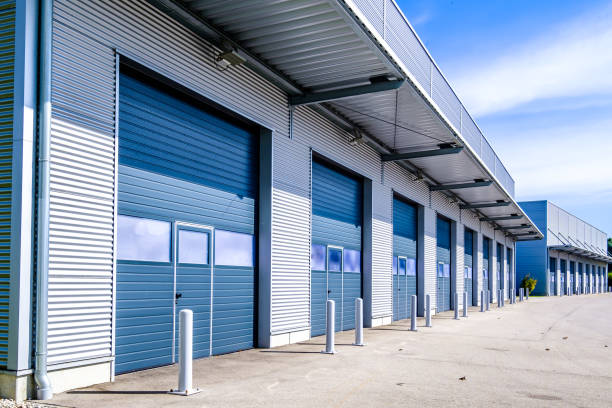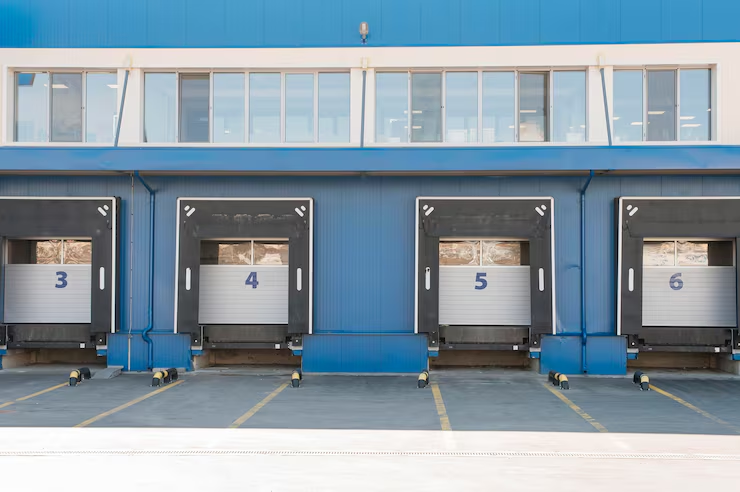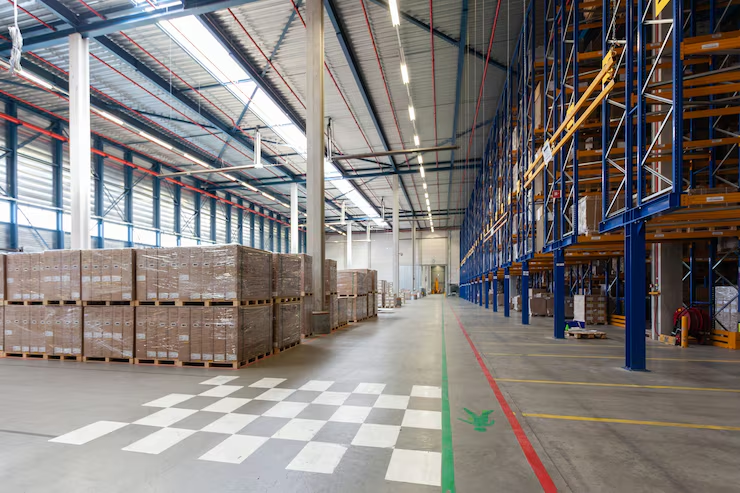Busy facilities live and die by the minute. If trucks queue at the entrance or drivers hunt for instructions, downstream processes stall and costs creep upward. Warehouse Gate Management turns the gate from a choke point into a productivity engine by choreographing who arrives, when they arrive, and how fast they clear the entrance. When arrivals are verified in seconds and steered precisely to the right door or staging zone, the entire warehouse breathes easier.
Smooth check-ins are not just about speed; they’re about certainty. Appointment adherence, digital credentials, and time-stamped movements give planners the confidence to sequence labour, docks, and equipment without building wasteful buffers. Mastering Warehouse Gate Management reduces dwell time, raises dock utilisation, and creates a consistent, predictable rhythm that carriers recognise and trust.
The Fundamentals of a High-Performance Gate
Pre-Arrival Orchestration and Appointments
Every fast check-in begins before the tractor turns into the drive. Strong pre-arrival processes capture shipment IDs, trailer type, seal numbers, and compliance documents ahead of time. When the tractor is geofenced within a set radius, the system pre-allocates a slot and shares instructions via SMS or app. That means the first interaction at the kiosk or guardhouse is a confirmation, not a conversation, and the driver proceeds without delay.
Digital Identification and Compliance at the Edge
Driver licence scans, carrier SCAC codes, and load references should be validated automatically the moment a vehicle presents at the gate. Tie these checks to watchlists for safety status, insurance currency, and vendor approvals. Because the verification is rules-driven and logged, entry decisions are consistent, auditable, and free from the variability of manual judgement during peak hours.
Dock Assignment that Follows Real-Time Reality
Even the best schedule can drift. A “live” dock assignment engine should reconcile appointments with what’s actually free, what’s being cleaned down, and what’s about to turn. The gate, yard, and warehouse management layers must speak the same language so that drivers receive clear, current instructions the instant they’re through the barrier.
Time-Stamped In/Out for Full Traceability
Accurate clocks beat arguments. Time-stamped arrivals, queue starts, dock doors, and departures provide a single source of truth for dwell billing, detention management, carrier scorecards, and labour planning. With clean records, process waste stops being anecdotal and starts being measurable—and fixable.
Draining Queues and Taming Peak Hour Congestion
Slotting and Smoothing to Match Capacity
Peaks are natural, but unmanaged peaks create spirals of delay. Use appointment windows that reflect true door capacity, equipment availability, and labour rosters. When actual flow deviates from plan, elastic buffer slots absorb surges without forcing drivers into long idle lines, while notifications nudge late arrivals to reschedule rather than stack at the curb.
Express Lanes for Pre-Cleared Freight
When a carrier arrives fully pre-cleared—credentials verified, paperwork filed, seal numbers confirmed—an express flow lets them clear the barrier in seconds. The signal is visible: fewer trucks sit idling, and carriers internalise that reliability is rewarded. That behavioural loop reduces variance and makes the entire arrival pattern more predictable.
Safety, Security, and Compliance Begin at the Threshold
Chain-of-Custody Starts at the Gate
High-value or regulated loads demand unbroken documentation. Photo capture on arrival, automated seal recording, and custody events at each handoff convert the gate into the first link of a secure chain. When something doesn’t reconcile, you know immediately—at the edge—rather than discovering it hours later on a dock.
Regulatory Documentation Without Paper Choke Points
Driver hours, HAZMAT declarations, and site-specific inductions can all be captured digitally during pre-arrival or at the kiosk. That keeps the guard line moving, reduces errors, and ensures inspection readiness. The result is a safer yard, fewer non-conformances, and credible evidence in the event of an audit.

The Technology Stack That Powers a Modern Gate
ANPR/LPR, RFID, and Smart Credentials
Automatic number-plate recognition, RFID tags, QR codes, and mobile credentials work best as a blended stack. ANPR accelerates first identification, RFID confirms the trailer or tractor pairing, and a driver’s mobile token binds the person to the vehicle. When those instruments feed a single rules engine, misreads are rare and exceptions are caught early.
Integration with Yard and Warehouse Systems
A gate solution in isolation simply moves the queue from outside the fence to inside it. Connect the gate to yard management, dock scheduling, and warehouse execution so that decisions at the barrier reflect live door states, labour constraints, and priority waves. That integration is where Warehouse Gate Management graduates from access control to flow control.
Real-Time Dashboards and Decision Support
Supervisors need to see queues forming before they materialise. Live dashboards should show ETA clusters, processing times by lane, dwell per carrier, and the next two hours of door availability. With this visibility, you can switch staffing, open a temporary lane, or resequence arrivals before wait time compounds.
The Business Case: Cost Out, Service Up
Lower Labour Cost per Transaction
Automation doesn’t eliminate people; it elevates them. Guards stop transcribing numbers and start resolving exceptions. Clerks spend less time chasing paperwork and more time coordinating assets. Because each check-in consumes fewer minutes, the same team clears a higher volume with less stress and fewer errors.
Better Carrier Experience and Faster Turns
Carriers judge your site by three things: how long they wait, how often instructions change, and whether disputes get solved quickly. When arrivals are predictable and instructions are definitive, carriers invest their best capacity in your freight. That trust is especially valuable during tight markets.
Emissions and ESG Benefits
Idling trucks burn fuel and goodwill. A gate that drains queues and routes drivers directly to the correct door yields tangible CO₂ reductions. With clean timestamps, you can evidence those gains to customers and regulators, folding Warehouse Gate Management neatly into your broader ESG story.
Implementation Without the Chaos
Start with a Baseline Gate and Yard Audit
Map the current reality. How many appointments are honoured on time? What is the median processing time per lane by hour? Where do exceptions pile up—and why? A factual baseline keeps the programme honest and guides where to pilot first.
Pilot One Gate, Then Prove and Scale
Pilot a single entrance or a single shift. Measure before and after: average queue length, median check-in time, dwell by carrier, and re-handle rates inside the yard. Use those results to refine SOPs and to secure buy-in from carriers, drivers, and internal teams before you scale.
Build a Playbook for Consistency
Document the appointment rules, exception paths, escalation triggers, and data ownership. Consistency is the difference between a quick burst of improvement and durable change. With a playbook, new staff ramp faster and multi-site networks behave like one coherent operation.
Pitfalls to Avoid
Over-engineering the rules engine is a common trap. When rules are opaque or too strict, exceptions explode at the guardhouse. Keep the first version simple—verify the essentials and move the truck. Another pitfall is forgetting the driver. If the on-device experience is clunky, uptake will be slow and queues will persist. Finally, don’t bury results in spreadsheets. Put live metrics where supervisors can see and act.
KPIs That Prove It’s Working
Track average and 90th-percentile gate processing times by hour. Monitor pre-arrival completion rates, appointment adherence, and the percentage of trucks routed directly to their final door without interim staging. Tie those to dwell time, detention cost, and carrier scorecards. When Warehouse Gate Management is effective, you’ll see a clear cascade: shorter queues, tighter door turns, fewer re-handles, and happier carriers.
Zelo Express:Warehouse Gate Management
Zelo Express designs and runs end-to-end solutions that connect the entrance to the last pallet on the dock. Our programmes blend technology, SOPs, and on-the-ground expertise so your team spends less time firefighting and more time shipping. We align the gate layer with appointments, dock scheduling, and yard moves, then underpin it with clean data and clear ownership. The outcome is a site where check-ins are measured in seconds, not stories.
Whether you operate a single regional warehouse or a multi-site national network, we tailor rollouts, train teams, and stand up the analytics that keep improvements visible. With Zelo Express, Warehouse Gate Management becomes a lever for service and savings, not just a security requirement.
FAQs About Warehouse Gate Management
How do I cut average gate processing time without compromising security?
Begin by shifting checks upstream so the gate validates rather than collects. Move driver credentials, seal data, and load references into a pre-arrival step, then verify them automatically at the barrier using ANPR, RFID, and mobile tokens. Because exceptions are the only manual work, agents focus their attention where it matters and transactions complete in seconds. As processing time drops, keep auditing a sample of clearances to ensure standards remain tight.
What is the best way to prevent queues during peak arrival waves?
Design appointments that reflect real capacity, not wishful thinking, and keep a small pool of elastic slots to absorb variation. Use geofenced ETAs to see waves before they hit and pre-stage instructions to drivers by lane. If a surge forms, open a relief lane or temporarily dedicate a lane to pre-cleared drop-and-hooks. These tactics keep trucks moving without diluting security controls or creating chaos inside the yard.
How should the gate connect to dock and yard decisions?
Treat the entrance, yard, and dock as a single flow. The same system that clears a truck should allocate its door, reserve the equipment it needs, and alert the dock when the tractor crosses the threshold. If a door goes out of service, the assignment engine must update the driver’s instructions instantly. That tight loop prevents dead-ends and unnecessary re-handles.
What metrics prove that my check-in process is truly improving?
Look for a sustained fall in median and p90 processing times, fewer trucks idling beyond a set threshold, and a higher share of arrivals routed straight to final doors. Downstream, you should see shorter dwell, lower detention payouts, fewer safety incidents at the gate, and rising carrier scorecard ratings. When those move together, you’re not just getting faster—you’re getting better.
Can a smaller facility justify investing in modern gate technology?
Yes. Smaller sites feel variability more acutely because one delayed truck can ripple across the shift. A lightweight stack—appointments, basic ANPR, and driver mobile tokens—often pays for itself through reduced detention, fewer overtime hours, and a calmer shift. As volume grows, you can add lanes, richer analytics, and deeper integration without re-architecting the core.
Final Thoughts: Make the First Minute Your Best Minute
The first sixty seconds on your site set the tone for everything that follows. When arrivals are verified instantly, instructions are unambiguous, and movement is direct, dwell collapses, costs fall, and service rises. That is the promise—and the payoff—of disciplined Warehouse Gate Management.
If you’re ready to turn your gate into a true flow engine, Zelo Express can help. We audit your current process, deploy the right blend of technology and SOPs, train your team, and stay with you until the new rhythm sticks. Book a discovery session, and let’s design the check-in experience your carriers brag about and your P&L can feel.




